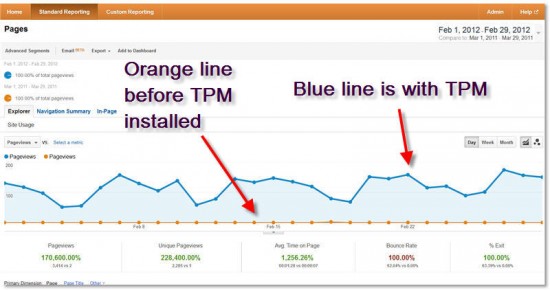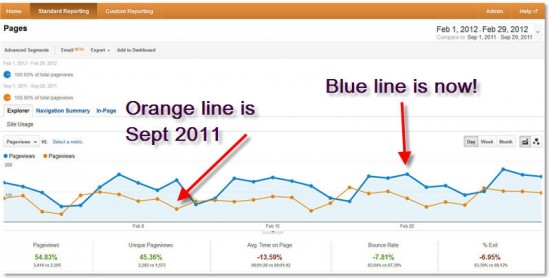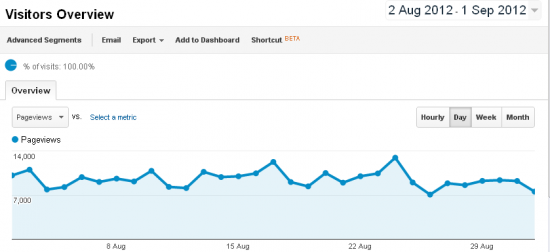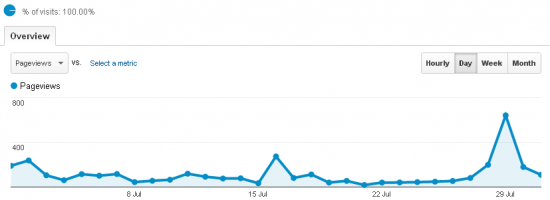 There’s been a minor kerfuffle on the web today after news that Housing Minister Grant Shapps founded a company which sells black hat SEO software. For those not in the know, “black hat” refers to techniques which attempt to boost a website’s visibility in search engines (so-called “Search engine optimization”, or SEO) via methods that are generally considered unethical (and, if detected, are liable to get your website downrated by Google, precisely the opposite of what you actually want).
There’s been a minor kerfuffle on the web today after news that Housing Minister Grant Shapps founded a company which sells black hat SEO software. For those not in the know, “black hat” refers to techniques which attempt to boost a website’s visibility in search engines (so-called “Search engine optimization”, or SEO) via methods that are generally considered unethical (and, if detected, are liable to get your website downrated by Google, precisely the opposite of what you actually want).
It’s probably rather embarrassing for Mr Shapps to be linked with this kind of stuff, but it isn’t illegal and is unlikely to do him any real harm. But I was interested enough to poke around a bit on the various websites where he peddles his snake oil to see what I could find.
One of the things which typifies black hat SEO vendors is that they make vastly inflated promises for the effectiveness of their products. The claims made for Trafficpaymaster, the software offered by Mr Shapps, are no exception. But I was intrigued to find a blog post where the author attempts to demonstrate just how good it is.
He does so by showing us a couple of screenshots from Google Analytics. Here’s the first:
As the image says, the orange line (ie, nothing) is before TPM was installed, the blue line is a few months afterwards. And here’s another one a few months after that:
Again, the blue line is better, showing that traffic has gone up a bit more in the subsequent months.
However, take a closer look. Open the full size images, and look carefully at the left hand side of the graphs where the blue and orange lines start. The y-axis of that graph is pageviews, and Google Analytics helpfully labels them. The two labelled intervals are 100 and 200, which is views per day. So, if these graphs are accurate, the site they came from is getting somewhere between 100 and 200 views a day over the course of a month. The article confirms that, by making this statement:
Just to clarify a couple of points for you. What you’re looking at in these two Google Analytics screen dumps is ONLY the traffic generated to this website using TrafficPaymaster. Everything else is stripped out. You’re looking at a one month snapshot in both cases. Last month’s traffic (captured for Feb 2012) shows 3,414 PageViews and these are ALL from TrafficPaymaster.
Nearly three and a half thousand pageviews a month. Pretty good, eh? Well, no. For comparison, here’s a similar screenshot from Google Analytics on one of my own websites, MotorwayServices.info:
It’s a slightly different format, because Google Analytics has changed a bit in the meantime, but the graph is essentially the same. And look at those numbers. My website is getting between seven and fourteen thousand pageviews a day. That’s more than twice as many in a single day as Trafficpaymster is sending to their demo site in a month.
OK, so maybe that’s an unfair comparison. After all, my site has been around long enough to become an established authority on motorway services, and it hasn’t been that busy all the time. And I do have other sites which aren’t that popular – take this blog, for example. Here are July’s figures for this website:
Although the scale here goes up to 800, it’s distorted by the fact that there are three notable spikes in this month. Excluding them, traffic to this website normally hovers around 100 pageviews a day. That is a bit less than the TPM demo site, so maybe I could improve my traffic by buying the software? But then again, what caused the spikes?
The one at the end of the month, where traffic hit the dizzy heights of 639 pageviews in a single day, was caused by me posting four articles to the blog in the space of two days – I normally only do an average of around one a week, if that. Obviously writing articles takes time, and I’m not doing this for the sake of bragging about pageviews, so I really don’t care that traffic drops off in between new posts. But Trafficpaymaster works by continually posting new content to the site every day. Which is what I did by hand, over that weekend. And my results were considerably better.
But, of course, what really matters if you’re spending money to get traffic is whether or not it’s worth it. As that TPM blog page says:
Now if you’re sitting there wondering what you’d do with all this extra traffic then the answer is simple:
- You can use these pages to promote your own product or service.
- You can use these pages to promote something that you’re affiliated to.
- You can simply stick Google AdSense or similar on there and make PPC cash by having these pages ranked and pulling in traffic.
The first two points I can’t really argue with. If you want people simply to see something, and you’re prepared to pay to make them see it, then maybe this kind of technique is worth considering. But what about the third? Is it possible to make money from Adsense this way?
There’s a slight problem here, because, while there’s no problem with sharing Google Analytics data with the world, Google Adsense’s program policies explicitly prohibit users from telling anyone how much they’ve earned from it. It’s also against their policies to share anyone else’s earnings if you happen to know them. I use far too many of Google’s services to want to risk losing any of my accounts, so I’m not going to break that rule now and give you actual figures. But I’ve done a few calculations based on the price of Trafficpaymaster and what I know to be typical Adsense earning rates. And what I’ve concluded is that if the software is as effective as the screenshots I’ve stolen copied from the TPM blog suggest, then in that scenario it would take a little over six years to pay for itself. Good value? I’ll let you decide.




